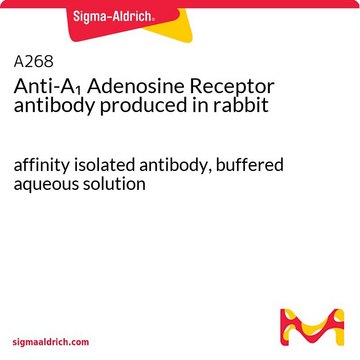M6190
Monoclonal Anti-MYOD1 antibody produced in mouse
clone 5.2F, purified immunoglobulin, buffered aqueous solution
Sinônimo(s):
Anti-Myogenic Differentiation Antigen 1
About This Item
Produtos recomendados
fonte biológica
mouse
Nível de qualidade
conjugado
unconjugated
forma do anticorpo
purified immunoglobulin
tipo de produto de anticorpo
primary antibodies
clone
5.2F, monoclonal
forma
buffered aqueous solution
peso molecular
antigen 34 kDa
reatividade de espécies
human, rat, chicken, mouse
concentração
1.0 mg/mL
técnica(s)
immunocytochemistry: suitable
immunohistochemistry (formalin-fixed, paraffin-embedded sections): 2-4 μg/mL
immunohistochemistry (frozen sections): 2-4 μg/mL
immunoprecipitation (IP): 2 μg using 1 mg protein lysate
western blot: 1 μg/mL (reacts with the ~45 kDa protein)
Isotipo
IgG2a
nº de adesão UniProt
Condições de expedição
wet ice
temperatura de armazenamento
−20°C
Informações sobre genes
human ... MYOD1(4654)
mouse ... Myod1(17927)
rat ... Myod1(337868)
Descrição geral
Imunogênio
Aplicação
- immunofluorescence staining at a 1:50 dilution
- western blotting
- immunostaining at a 1:300 dilution
Ações bioquímicas/fisiológicas
forma física
Exoneração de responsabilidade
Não está encontrando o produto certo?
Experimente o nosso Ferramenta de seleção de produtos.
recomendado
Código de classe de armazenamento
10 - Combustible liquids
Classe de risco de água (WGK)
nwg
Ponto de fulgor (°F)
Not applicable
Ponto de fulgor (°C)
Not applicable
Certificados de análise (COA)
Busque Certificados de análise (COA) digitando o Número do Lote do produto. Os números de lote e remessa podem ser encontrados no rótulo de um produto após a palavra “Lot” ou “Batch”.
Já possui este produto?
Encontre a documentação dos produtos que você adquiriu recentemente na biblioteca de documentos.
Nossa equipe de cientistas tem experiência em todas as áreas de pesquisa, incluindo Life Sciences, ciência de materiais, síntese química, cromatografia, química analítica e muitas outras.
Entre em contato com a assistência técnica